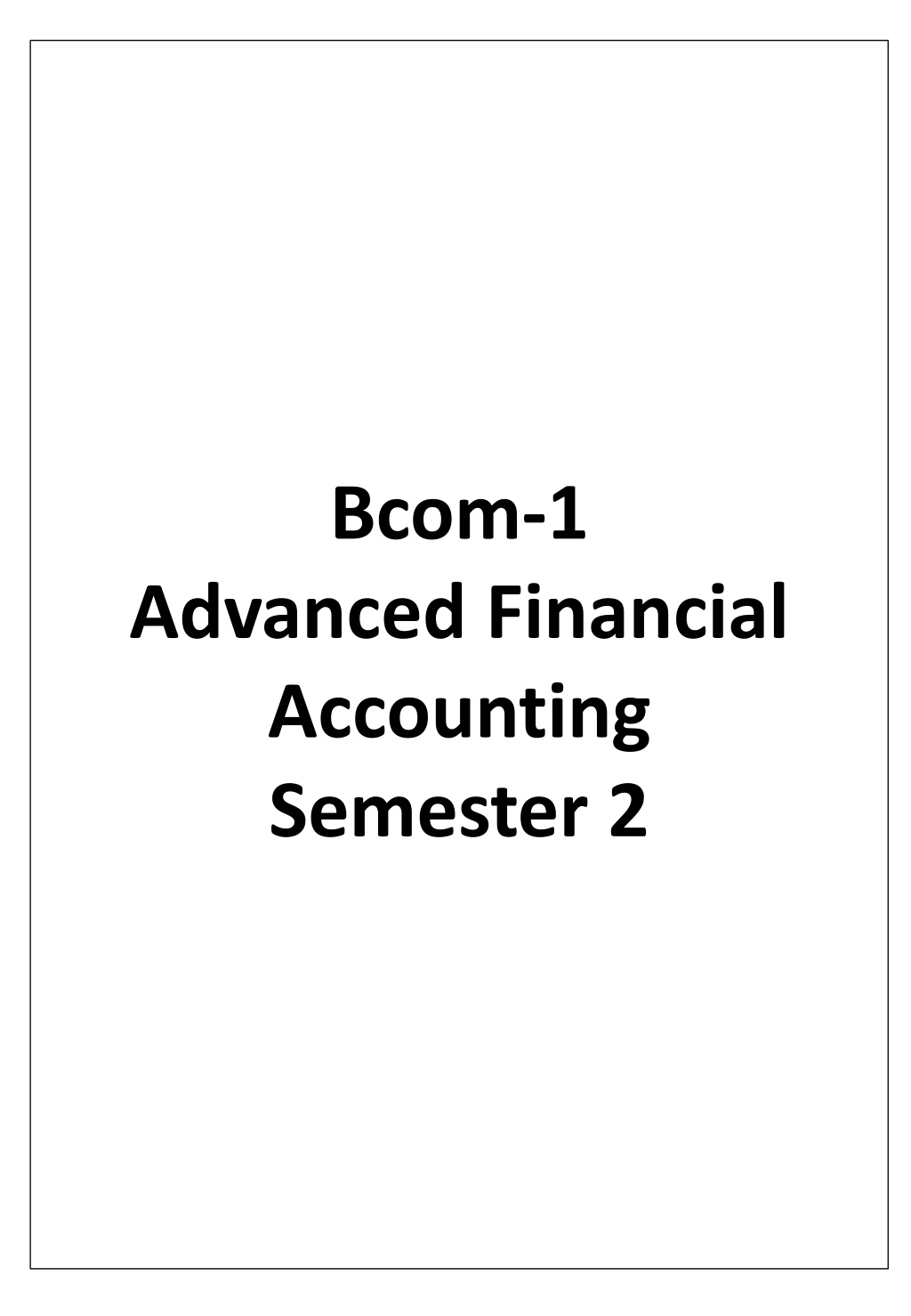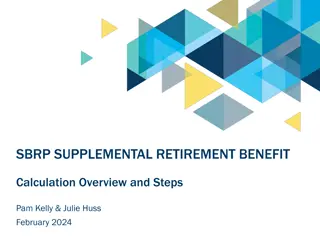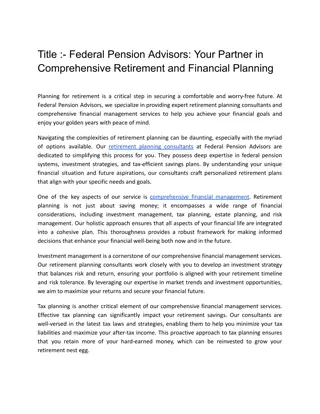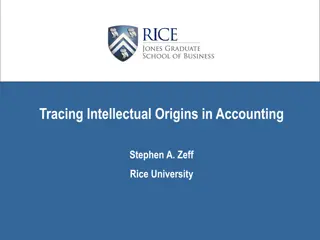Retirement and Death of a Partner in Financial Accounting
Explore the process and implications of a partner retiring or passing away in a firm, including the treatment of goodwill, reserves, revaluation of assets and liabilities, profit sharing ratios, and accounting problems that arise. Learn about partner rights, calculations, and dissolution scenarios as per partnership laws.
Download Presentation

Please find below an Image/Link to download the presentation.
The content on the website is provided AS IS for your information and personal use only. It may not be sold, licensed, or shared on other websites without obtaining consent from the author.If you encounter any issues during the download, it is possible that the publisher has removed the file from their server.
You are allowed to download the files provided on this website for personal or commercial use, subject to the condition that they are used lawfully. All files are the property of their respective owners.
The content on the website is provided AS IS for your information and personal use only. It may not be sold, licensed, or shared on other websites without obtaining consent from the author.
E N D
Presentation Transcript
Bcom-1 Advanced Financial Accounting Semester 2
Retirement or Death of a Partner Retirement of a Partner A partner has the right to retire from the firm after giving due notice in advance. Old partnership to an end after the retirement of a partner, but the firm continues and a new partnership comes into existence between the remaining partners. A retiring partner is entitled to get the following : 1. Share in goodwill :- Goodwill of the firm is valued and the retiring partner s share of goodwill is credited to his Capital Account.
2. Share in Reserves :- Reserves are the undistributed profit of the previous years. Hence, the retiring partner s share of reserves or undistributed profit is also credited to his Capital Account. 3. Share in Revaluation of Assets and Liabilities:- Assets and Liabilities are revalued on the date of retirement and retiring partner s share of profit is credited or the loss is debited to his Capital Account. Total amount due to the retiring partner, thus ascertained, is either paid off immediately or is transferred to his loan account, to be paid afterwards.
Accounting Problems :- Following accounting problems arise on the retirement of a partner:- 1. Calculations of new profit sharing ratio and gaining ratio of the continuing partners. 2. Treatment of Goodwill. 3. Accounting Treatment of Revaluation of Assets and Liabilities. 4. Accounting Treatment of Reserves, accumulated profit and losses. 5. Payment to retiring partner. 6. Adjustment of Capitals in proportion to profit sharing ratios.
Calculation of New Profit Sharing Ratio If the new profit sharing ratios of the remaining partners are not given in the question, it will be assumed that the remaining partners continue to share profits and losses in the old ratios.
On the happening of any one of the following incidents:- (Sec. 42) i. ii. On the fulfilment of the object for which the firm was formed. iii. On the expiry of the period for which the firm was formed. On the insolvency of a partner. By order of the court (Sec. 44) :- The court may, on an application by partner, order the dissolution of the partnership firm under the following circumstances : 1) When a partner has become of unsound mind. 2) When a partner, other than the partner filing a suit, has become permanently incapable of performing his duties as a partner.
3) When a partner, other than the partner filing a suit, is guilty of misconduct that may harm the partnership. 4) When a partner, other than the partner filing a suit, wilfully or persistently commits breach of partnership agreement. 5) When a partner, other then the partner filing a suit, has transferred the whole of his interests in the firm to a third party. 6) When the court is satisfied that the firm cannot be carried on except at a loss. 7) When the court is satisfied that the dissolution is just and equitable due to some other reasons.
Distinction between Dissolution of Partnership and Dissolution of Firm Basis of Distinction Dissolution of Partnership Dissolution of Firm It refers to a change in the existing agreement between the partner It refers to the dissolution of partnership between all the partners of the firm 1)Meaning In case of dissolution of firm, firm does not continue business 2)Continua tion of the business In case of dissolution of partnership, the firm continues its business. in case of dissolution of partnership, books of accounts may not be closed In case of dissolution of firm, books of accounts have to be closed 3) Books of Accounts Dissolution of partnership does not necessarily means the dissolution of firm Dissolution of firm necessarily means the dissolution of partnership also. 4) Effect It may be both voluntary and compulsory. It is voluntary. 5) Nature
Settlement of Accounts on Dissolution Sections 48,49 and 55 of the partnership act specify the mode of settlement of accounts on the dissolution of a partnership firm. These are as follows : (1) First of all, the amount of loss including the deficiency of Capital shall be paid out of profits, next out of Capital, and lastly, if necessary will be realised from the partner in their profit sharing ratio.
(2) Amount realised from the sale of the assets of the firm (including any sum undistributed by the partner) I. First of all, outside debts of the firm will be paid. II. Out of the remaining amount, the loans advanced by partner will be paid off. III. Thereafter the balance of partner Capital Amounts will be returned. IV. If some amount remains, it will be divided among the partners in their profit sharing ratio.
Payment of Firm Debts and Separate Debts Just as the amount realised from the sale of the assets of the firm is first used to pay off firm debts and if there is any surplus available, it is distributed among the partner, similarly, the amount realised from the sale of private estate of partners will be used first to pay the private debts of the partner, and if there is any surplus available, it will be used in paying off the firm s liabilities.
Accounting Procedure on Dissolution of Firm In order to close the books of the firm on dissolution the following accounts are opened in the order give below :- 1. Realisation Account 2. Partner s loan Accounts 3. Partner s Capital Accounts 4. Cash or Bank Account 1). Realisation Account :- A Realisation Account is opened for disposing of all the assets of the firm and making payment to all the creditors. Realisation account is a nominal account and the object of such an account is to find out the profit or loss on realisation of assets and payment of liabilities.
Entries in realisation account are made in the following manner :- 1). For Closing Assets Accounts :- All assets of the firm (except Cash and Bank Balance) are transferred to this account at book values entry is : Realisation A/c To Sundry Assets A/c (Assets transferred to realisation A/c at book values) While transferring the assets to this account, the following points should be kept in mind :
Only those assets which can be converted into cash are transferred to this account. Fictitious assets such as accumulated losses like Dr. balance of P & L A/c and deferred revenue expenditure like Dr. balance of advertisement expenses A/c etc., are not included in the definition of assets and should not be transferred to realisation A/c. Such accounts should be transferred to the partner s Capital Account: Partner Capital A/cs Dr. To Profit & Loss A/c To Deferred Revenue Expenditure A/c (Balance of loss transferred to Capital A/cs)
Distinction Between Revaluation Account and Realisation Account Basis of Differe nce Revaluation Account Realisation Account 1) When preparation This account is prepared on the admission retirement or death of a partner. This account is prepared on the dissolution of partnership firm. 2)Object of preparation This account is prepared to make necessary adjustment in the value of liabilities. This account is prepared to find out the profit or loss on the sale of assets and repayment of liabilities. 3) Result Even after the preparation of revaluation account the firm continues to function, though with a changed relationship among the partners. The firm comes to an end after preparation of this account. 4) Value of assets and liabilities recorded Only the difference between the book values and revised values of assets and liabilities is recorded in this account. Book value of assets and liabilities, the realised value of assets and the actual payment of liabilities is recorded in this account. 5) When prepared This account may be required to be prepared many times during the life- time of a firm. This account is prepared only once during the life-time of a firm.























